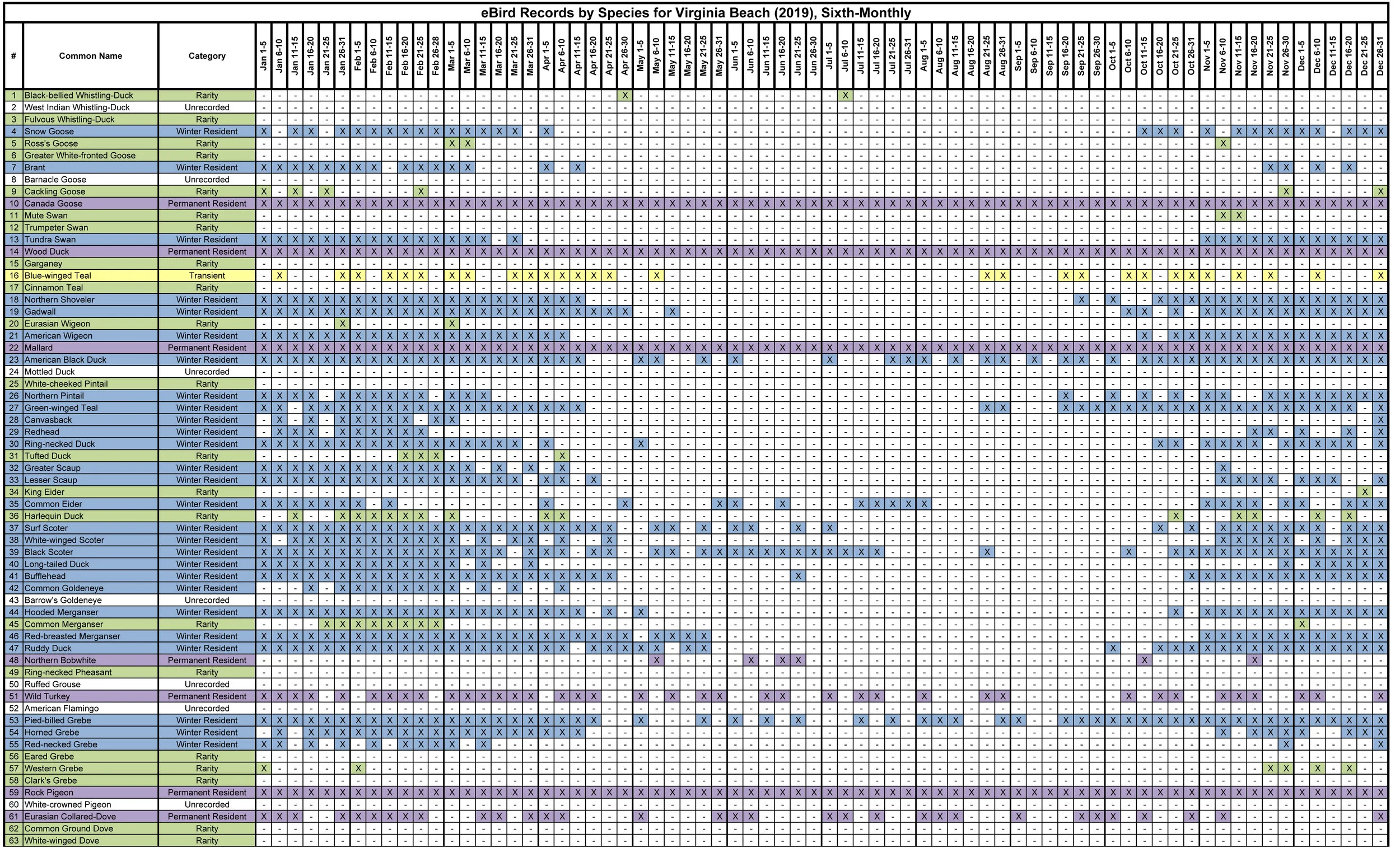Annual Summary: 2019
A calendar year for the record books, 2019 produced the greatest diversity of species so far logged to eBird in Virginia Beach! It is difficult to put all the exciting finds that occurred throughout the year into words, and I often find that graphs & tables can do a better job of visually covering this large time span. Of course, the individual monthly reports in the Journal section of the is website provide an unparalleled look into what was occurring among the birding community at the time, there were quite a few highlights that warrant mention here. A total of five species were added to the Virginia Beach city list in eBird during 2019. Those included our first TUFTED DUCK, a hen found on a freshwater pond behind Chartway Federal Credit Union on 19 Feb (ph. Andrew Baldelli & Tracy Tate), which lingered at this location through 26 Feb. Incredibly, we also had our second record for the species when a drake was found on the C Pool of Back Bay NWR on 6 Apr (ph. Steve Myers) and continued only through 8 Apr. The first accepted record of SABINE’S GULL also occurred, during the passage of Hurricane Dorian from Lynnhaven Inlet on 6 Sep (vis. Andrew Baldelli & Rob Bielawski). This record for formally accepted by the Virginia Avian Records Committee (VARCOM) in Category Two, maintained for records without physical evidence but for those with adequate written documentation of the rarity. A remarkable KIRTLAND’S WARBLER that blessed the city with its presence on 4 Oct (ph. Amy & Steve Myers) also made for our first known record, and the first such record ever in coastal Virginia. Shortly after the discovery of a Purple Gallinule at Princess Anne WMA Whitehurst Tract, a HUDSONIAN GODWIT was found on the northernmost impoundment of the southern half of the WMA, on 6 Oct (ph. Andrew Baldelli & Rob Bielawski). This was a long-overdue first record for the city in eBird, and it has likely occurred in the past at locations like Back Bay NWR and simply gone undocumented. Though a second accepted eBird record, the first photographically-documented CONNECTICUT WARBLER occurred at Back Bay NWR from 13-14 Oct (ph. Cindy Hamilton & June McDaniels), providing a county life bird for many locals. Lastly, the first eBirded BLACK-CHINNED HUMMINGBIRD occurred at a private residence in Blackwater from at least 15 Nov-24 Dec (ph. Kelly Dean). This individual was captured, banded, measured, and released by Bruce Peterjohn on 7 Dec, and confirmed as a hatch year male. Photographs taken on 22 Nov had also confirmed (ph. Mike Collins) this identity after a long week of speculation. Outside of these new additions to the city eBird list, there was certainly no shortage of other excellent rarities found in Virginia Beach! These are all highlighted in the 2019 Noteworthy Observations listing, which includes all records that met the 2019 Nortworthy Observations Criteria! Rarities aside, the bulk of observations submitted to eBird tend to focus more on expected species, and with rarities and regularly occurring species combined, we saw records for a total of 306 species in 2019! The following charts offer a breakdown on how these species were split across different time periods. The first displays our monthly totals, the second focuses on thrice-monthly periods (1st-10th, 11th-20th and 21st-end of each month), while the last chart goes a bit more in depth to sixth-monthly periods (1st-5th, 6th-10th, 11th-15th, 16th-20th, 21st-25th & remainder of each month). Clicking on each will show the same periods from 2018 as a comparison, so it is easy to click back and forth between 2018 vs. 2019 data. Moving forward, I believe this will become an interesting tool to compare across years.
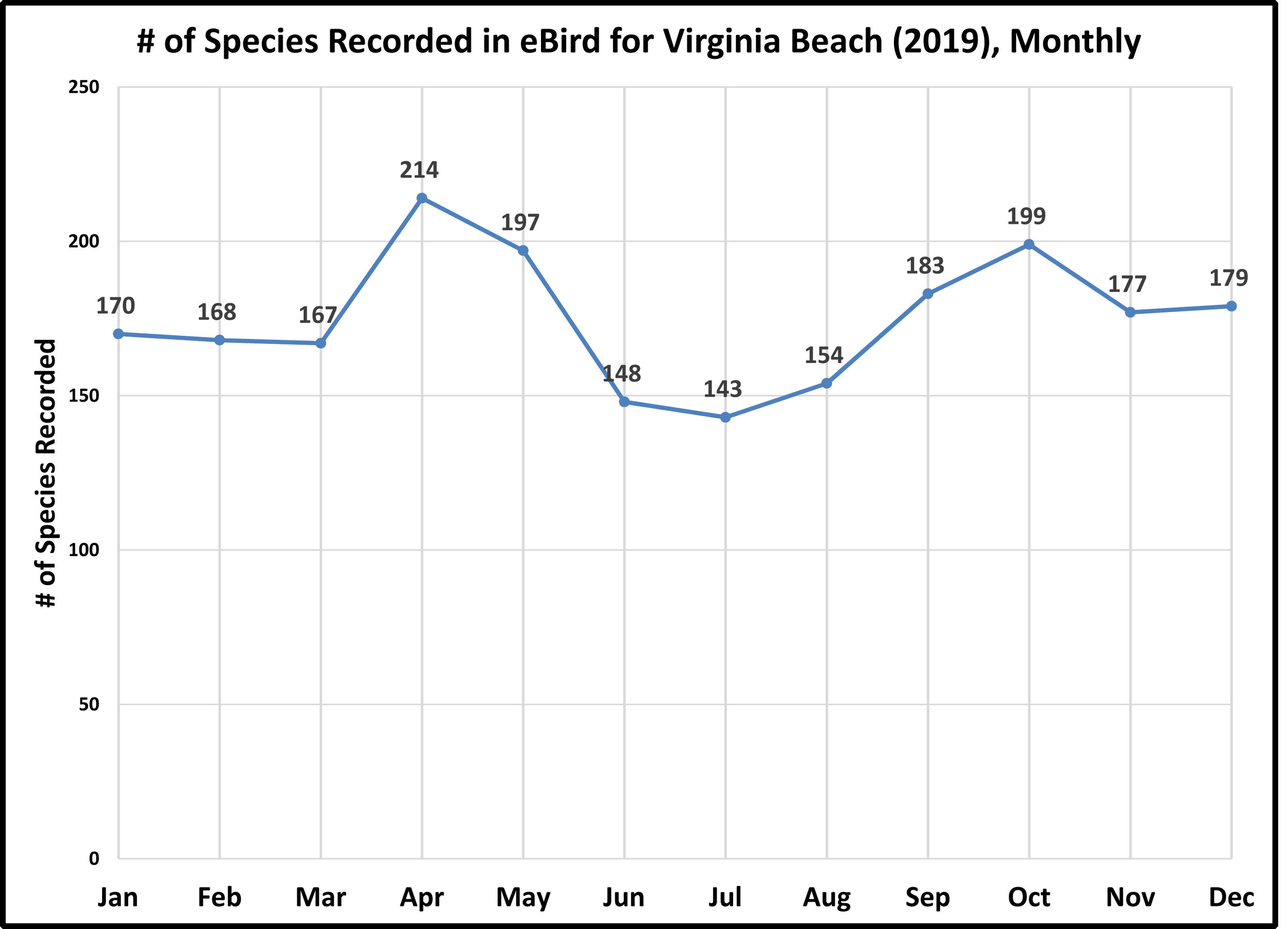
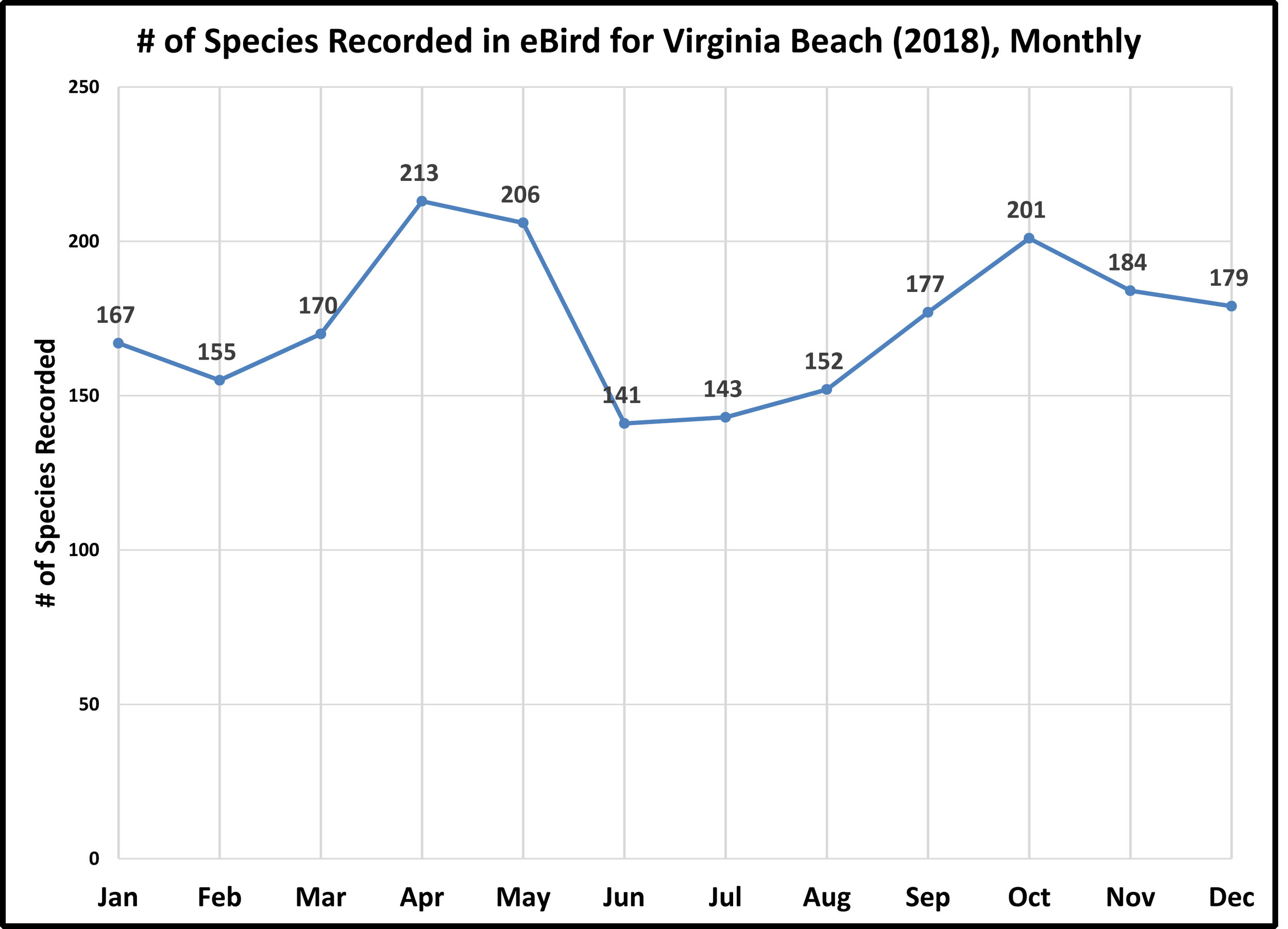
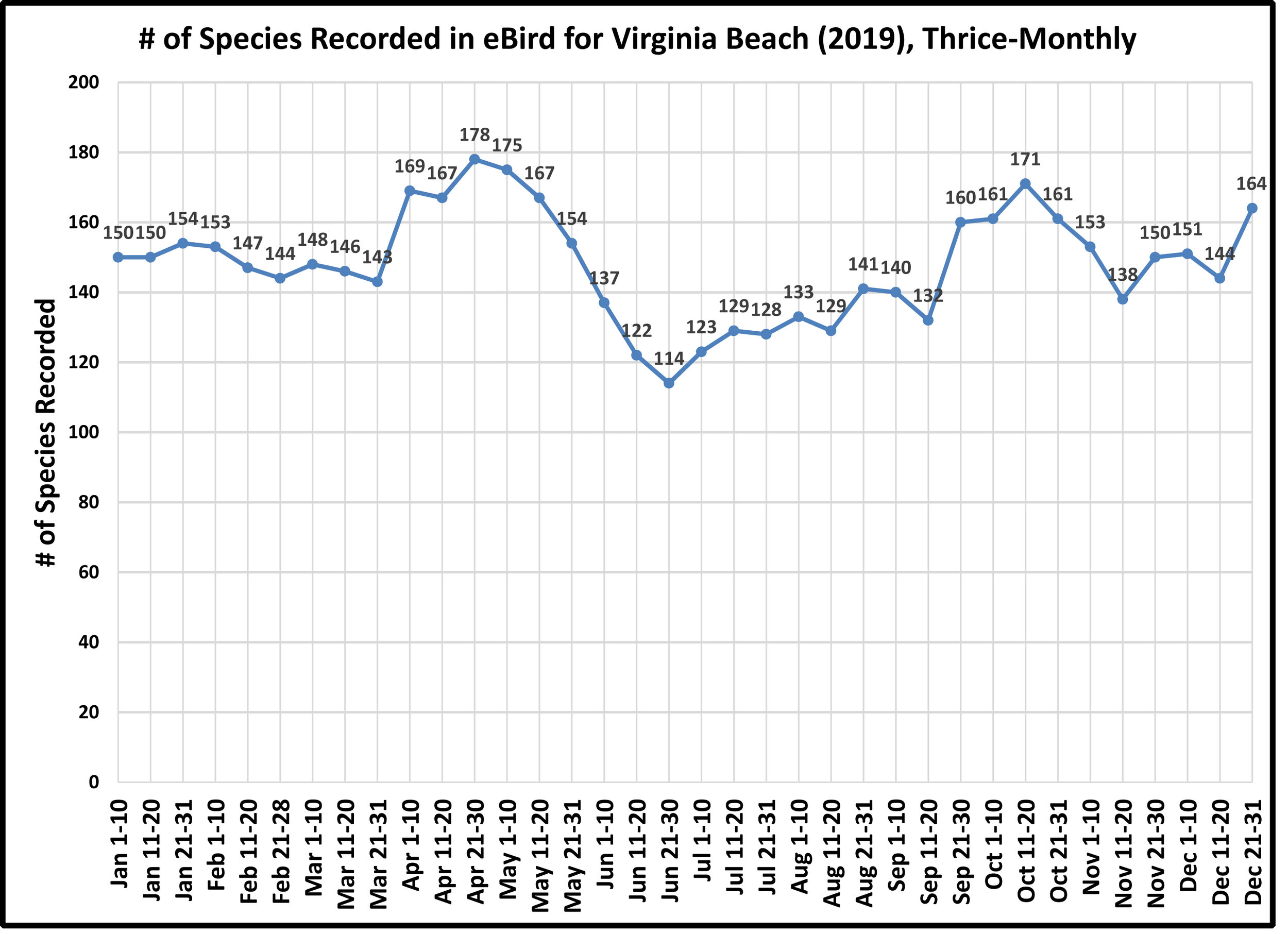

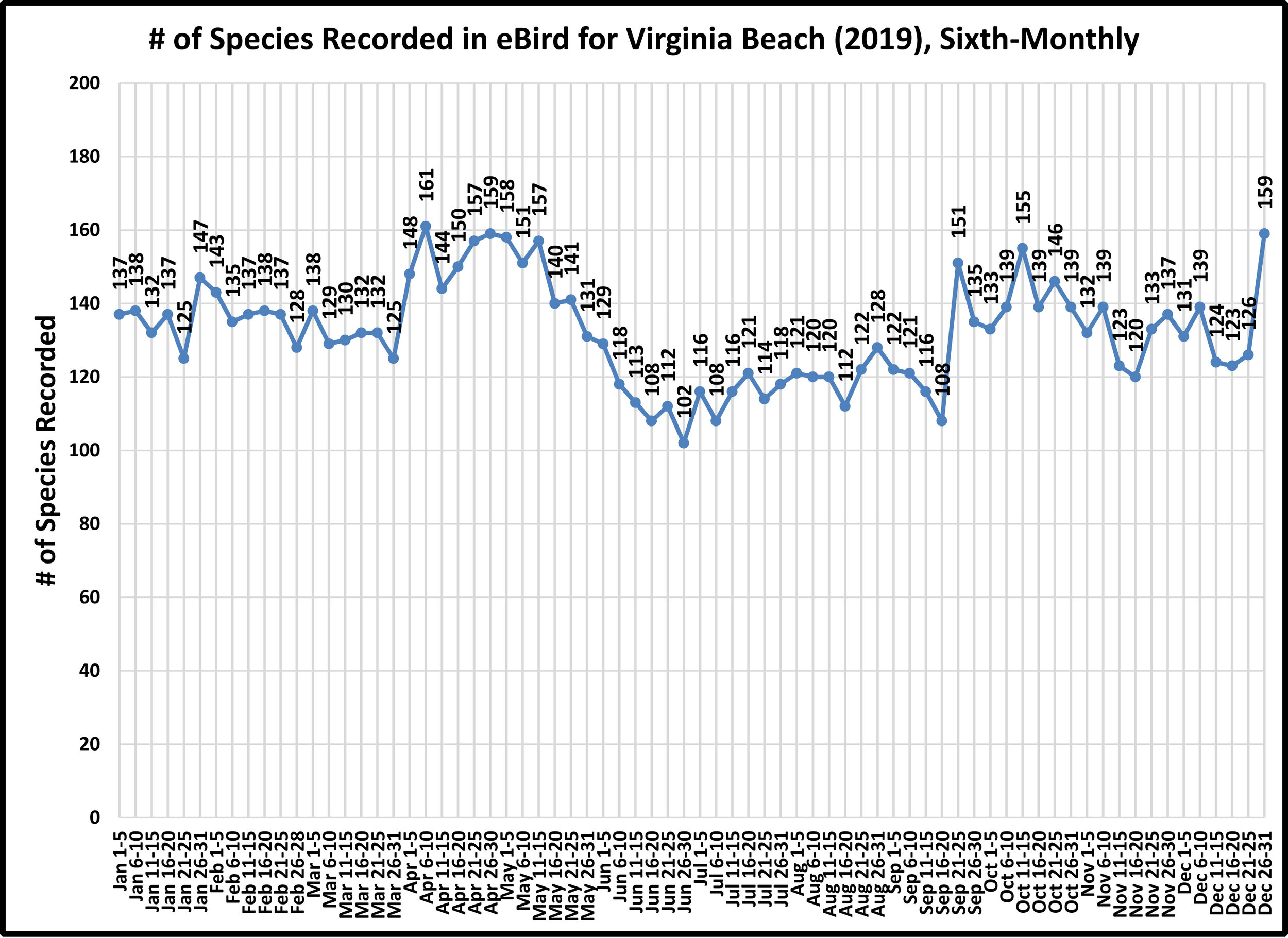
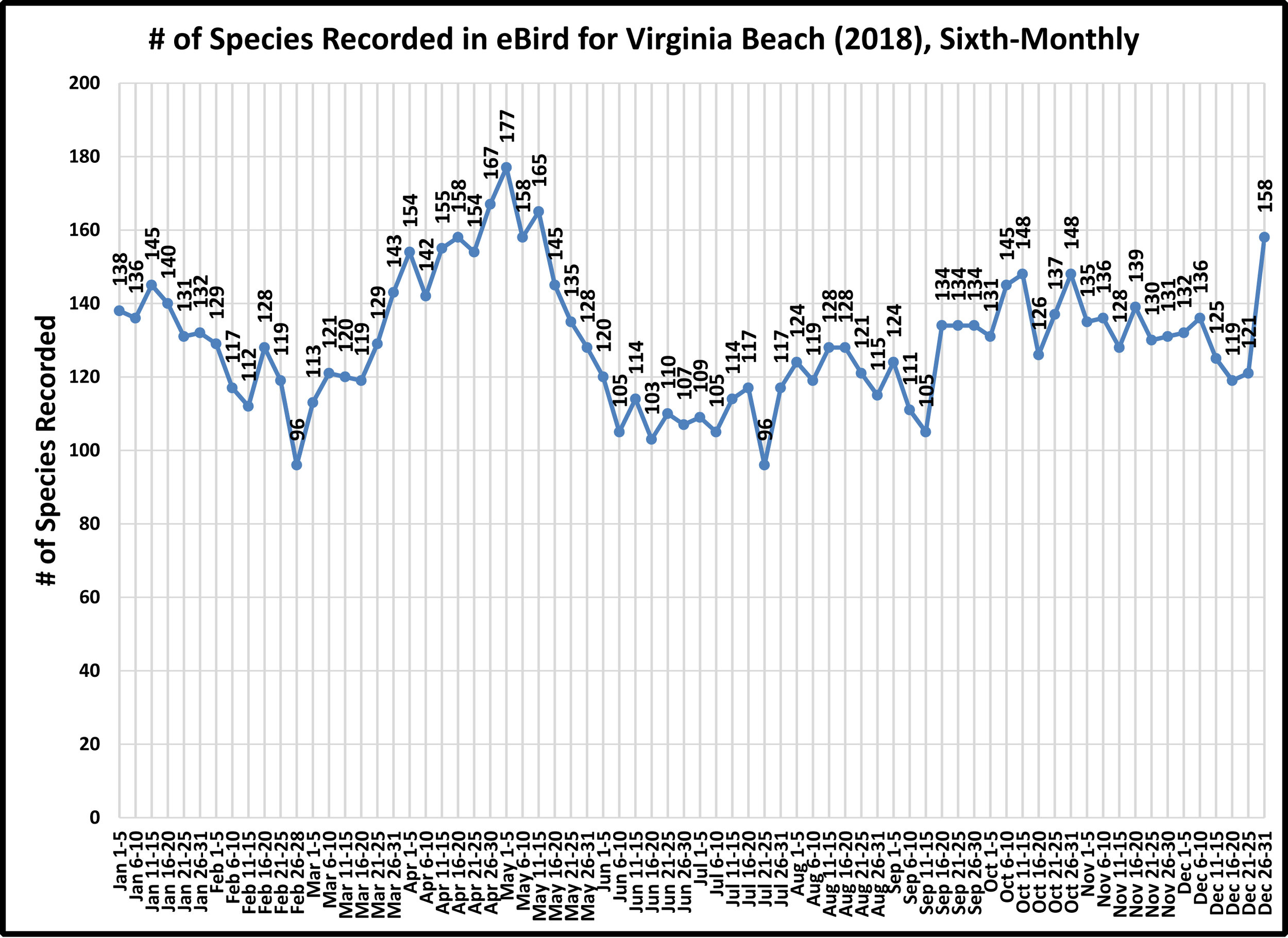
Of course, all the data above was derived from the accepted eBird database. In order to assemble the charts above, each species was looked at, and records for each sixth-monthly period were noted as either present, or not present. The table below is the culmination of that effort, and allowed for the charts to be created with ease. All cells with an “X” indicate presence of an accepted eBird report, whether it be one with media, written notes, or anything else that allowed for acceptance. Those with an “-” indicate the species was not observed during the given time period. Color coding is set up to align with that which is typical of most field guides, only tailored to what the eBird data filter for Virginia Beach is set to for each species. Purple fill is used for species that are accepted year-round without review; red is for those accepted in summer (from a spring arrival to a fall departure date); blue is for those accepted in winter (from a fall arrival to a spring departure date); yellow is for those accepted in spring & fall; orange is for those accepted in fall; lighter yellow is for those accepted in spring; lighter blue is for irruptive winter species which can be accepted in some winter seasons but reviewed in others; green is for species which are reviewed year-round in any count, and white is for species that have never been recorded in Virginia Beach but hold accepted records in the state, and are species to be mindful of. This setup matches what is depicted in the Distribution tables on this website.
It was an incredible year for those of us who spent our free time outdoors hoping to observe some interesting birds. Those of us who continue to provide observations to eBird are performing an invaluable task to document the occurrence of our bird species. Over time, these observations will only become more important, and it is my hope that visualizations like the above (and Everything publicly visible over at www.eBird.org) can help to showcase changes in our species over time. Of course, our focus has already turned to the 2020 calendar year, and there’s no telling what surprises might be in store. But, for those among us who enter the field with open eyes & ears, there are surely exciting finds just waiting to be uncovered. So with that in mind, cheers to the new year, and best wishes to all those members of the community who passionately invest their personal time documenting our birdlife!
